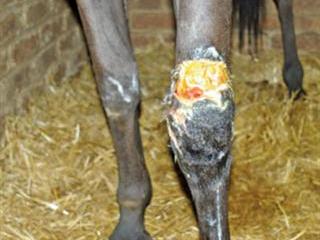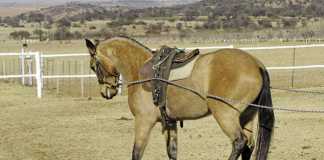
The saying, “there’s nothing new under the sun” applies to antibiotics too. “How can that be?” I hear you ask. “Aren’t antibiotics a 20th century invention?” Antibiotics were actually discovered by modern medicine rather than invented.
With certain infections it’s essential to use antibiotics to kill the offending bacteria and help restore a horse to good health. For example, while not used specifically to treat lameness, antibiotics will ease the infection around a cut or wound that’s making your horse lame.
There are actually very few antibiotics on the market licensed for use in horses. These are penicillin, streptomycin, trimethoprim, metronidazole and ceftiofur. Vets occasionally have to use human drugs on horses. Some horse owners are surprised to learn that antibiotics are prohibited substances in competitions. The reason for this is that, used in combination with certain drugs, antibiotics can enhance performance.
Use and resistance
Often, when an infection isn’t responding to an antibiotic, the horse owner asks for ‘something stronger’. There’s no such thing. There are only effective drugs or ineffective drugs. The lack of successful treatment may be due to the bacteria’s ability to resist the antibiotic. Sometimes resistance only starts to occur in mid-treatment which means that the treatment initially appears to be effective but ends up ineffective.
When to use an antibiotic is a decision best left to a vet. It is, however, a good idea to take your horse’s temperature twice a day. This should be standard practice, along with picking out hooves, as a rise in temperature is usually the first sign that your horse is fighting an infection. Secondary signs include a loss of appetite and a depressed demeanour. If you’re nursing your horse’s wound and you notice an onset of swelling, then it’s a good idea to get your vet to come and have a look.
No disinfectant
While on the subject, wound care is critical in preventing the unnecessary use of antibiotics. Try not to use a disinfectant to clean wounds, as it’s a definite disadvantage during the healing process. The disinfectant may kill the germs but it also kills healthy tissue necessary for healing. The best antiseptic to wash cuts with is salty water. To speed up healing, use boiled peach leaves and flush the wound twice a day.
The importance of cleanliness cannot be over-emphasised. As noted, if there’s swelling you’re losing the battle against infection. Finally, remember to give your horse a good probiotic if it’s been on a course of antibiotics. There are many that have been specially designed for equine use. If you can’t find a good probiotic, a cup of yoghurt twice a day will do the trick.
Feeding 30g fresh garlic twice a day is also beneficial as garlic is known for its natural antibacterial properties.
Ointments for wounds
Take 50ml of tincture of hypericum and 50ml of tincture of calendula and mix. Add 20ml of the mixture to 250g zinc ointment. Mix well until the zinc ointment appears brownish in colour. Apply to the wound three times a day. Horses are very prone to proud flesh or swollen wounds. Hypericum speeds up the healing process and calendula slows down the granulation that causes proud flesh and heals from the inside out, minimising scarring. Raw honey also makes an excellent ointment for wounds.
Contact Kim Dyson on 082 888 6511 or at [email protected]. Please state ‘Horse therapy’ in the subject line of your email.













